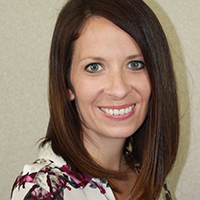Deep community relationships lead to better practices and advance racial and health equity
April 5, 2022The Minnesota Council on Foundations recently held its annual conference, bringing together philanthropic leaders across the state for virtual and in-person sessions. The 2022 conference focused on how philanthropy can support a just and anti-racist future through resilience and responsiveness to community needs.
and in-person sessions. The 2022 conference focused on how philanthropy can support a just and anti-racist future through resilience and responsiveness to community needs.
This year’s conference featured a panel discussion led by Bukata Hayes, board chair of the Blue Cross and Blue Shield of Minnesota Foundation and vice president of racial and health equity at Blue Cross, along with Allison Corrado, senior program officer at the Blue Cross Foundation; Zach Pruitt, executive director of the Northfield Healthy Community Initiative; and Daniela Vasan, a partner at Wildflower Foundation.
The session offered attendees insight on the Foundation’s process to develop its racial equity plan and why things like the demographics of an organization’s leadership play a significant role in this work.
Creating a racial equity plan
The Foundation has long been committed to racial and health equity through its partnerships, strategies and grant programs. After the murder of George Floyd and the declarations of racism as a public health crisis, the Foundation moved forward with creating a comprehensive plan to deepen that commitment.
“It was clear that this was not only an opportunity to learn from the past, lean into the moment and take steps toward justice – it was a mandate,” shared Bukata. “There is a quote from Lilla Watson that we always try to keep in the forefront of all our racial equity efforts: ‘If you have come here to help me, you are wasting your time. But if you have come because your liberation is bound up with mine, then let us work together.’ The Foundation has always believed that the answers and solutions come from the community. As we created our racial equity plan, we remained rooted in the realities shared with us from our community partners.”
Plan strategies
The Foundation’s racial equity plan includes several strategies – many of which were already in place but were strengthened through the plan’s implementation. These strategies include:
- Broadening the range of financial tools used to advance racial and health equity
- Continuing to assess and develop racial equity and intercultural skills
- Advocating for public policies that advance racial equity
- Further articulating clear and accountable metrics for achieving racial equity
Role of leadership demographics
The Foundation believes that those most impacted by racism are best positioned to identify and lead solutions. This belief led to renewed reflections on leadership demographics – how leaders of community organizations self-identify in terms of race, ethnicity, gender identity, disability and more.
When polled, 48 percent of funders attending the session said they ask for demographic data of the staff or boards of organizations they fund.
In his remarks, Bukata noted that it is critical for funders and the community organizations they support to engage in ongoing conversations on this topic.
“If we, as funders, are going to be asking organizations to tell us about their leadership demographics – who is included in leading their organization – it’s only right for us to engage in those questions ourselves in terms of who is leading and who is influencing our work,” said Bukata.
“If we as funders are going to be asking organizations to tell us about their leadership demographics – who is included in leading their organization – it’s only right for us to engage in those questions ourselves in terms of who is leading and who is influencing our work." – Bukata Hayes
Nonprofit perspectives
An integral part of these ongoing conversations is transparency around why demographic data is being collected and how it will be used. Zach Pruitt, executive director of the Northfield Healthy Community Initiative, shared his perspective.
“We’re frequently asked to provide data on the demographics of our board, staff and our youth served,” Zach said. “But there aren’t a lot of instances where we can tell how that data will be used, either for funding decisions or in other areas. So, we’ve started asking funders who we have long-term partnerships with to share more about that. That way, we’re able to evaluate the goals of the funder and goals of our organization to determine alignment.”
Zach also discussed how funders’ criteria can sometimes have unintended consequences. “For example, some funders may want to see organizations with boards that reflect the populations served by their work, while also requiring boards to have robust fundraising capabilities,” he said. “While both these criteria are well-intended efforts to broaden funders’ equitable approaches, the impact they could have on community partners is an essential part of the conversation.”
Daniela Vasan, a partner at Wildflower Foundation, added her thoughts, particularly how capturing leadership demographic data doesn’t always align with how different organizations are structured.
“We believe that the people closest to the problems are best suited to come up with the solutions,” said Daniela. “This is, in part, why Wildflower Foundation was established as a non-hierarchical organization. Part of my role is translating our structure and our work to others who may inherently believe that every organization is designed with a hierarchy in mind.”

How the Foundation uses leadership demographic information
For the Foundation, efforts in this area are rooted in its commitment to advance racial and health equity, continually improve processes and remain in deep relationships with grantee partners.
“We are always looking for ways to be more thoughtful in our work, and we recognize that all of our community partner organizations are unique,” said Allison. “There is nuance in how organizations are run, where decisions are made and what leadership looks like. As we continue to evolve how leadership demographics influence things like funding decisions, we’re grateful for the deep and trusting relationships with our partners that make these important conversations possible.”
For more information
View this full conference presentation here, along with the MCF conference keynote sessions and other panel discussions.

